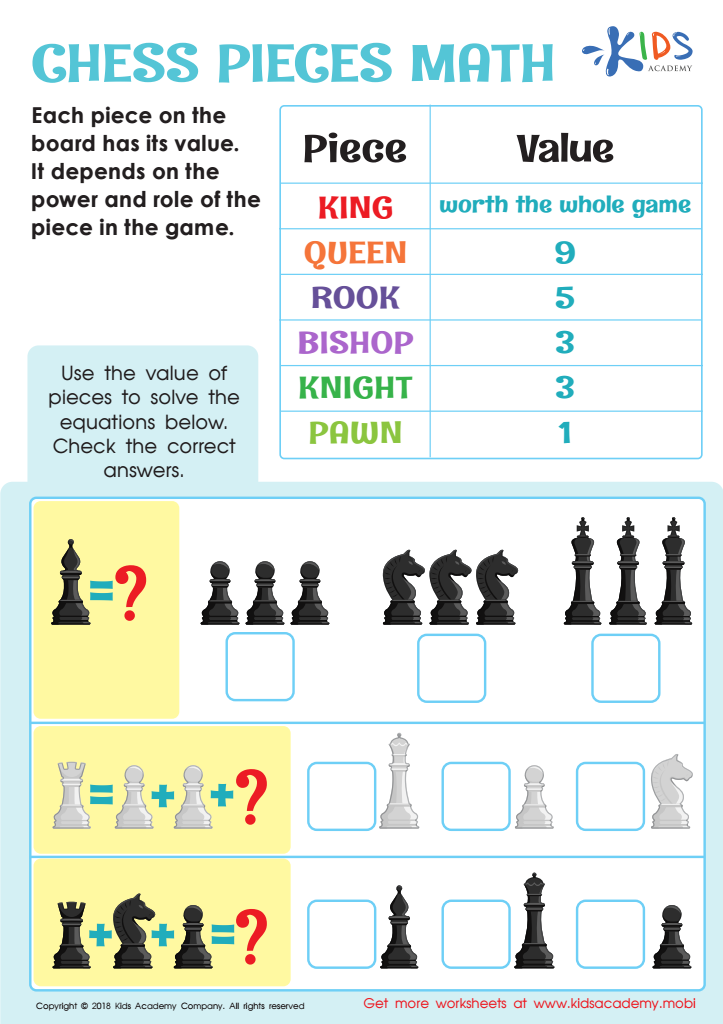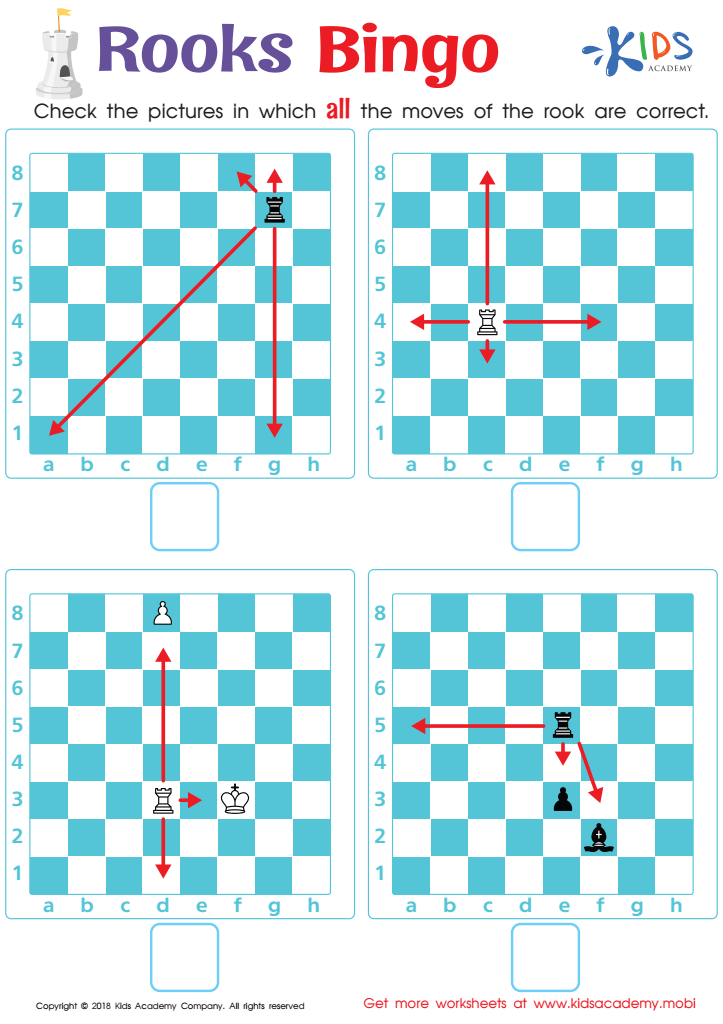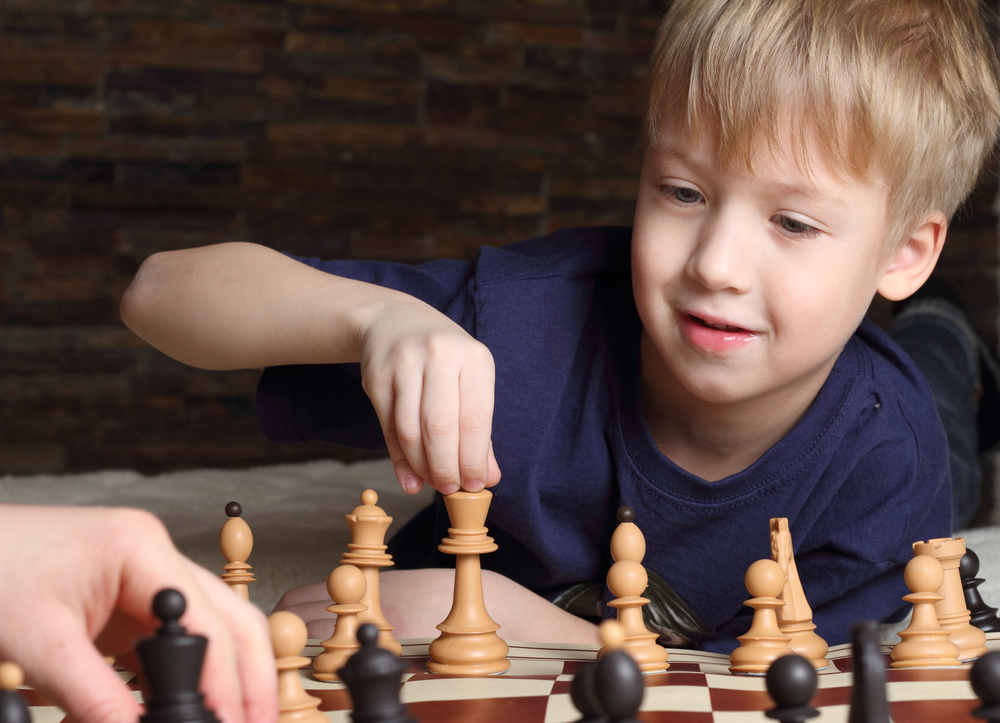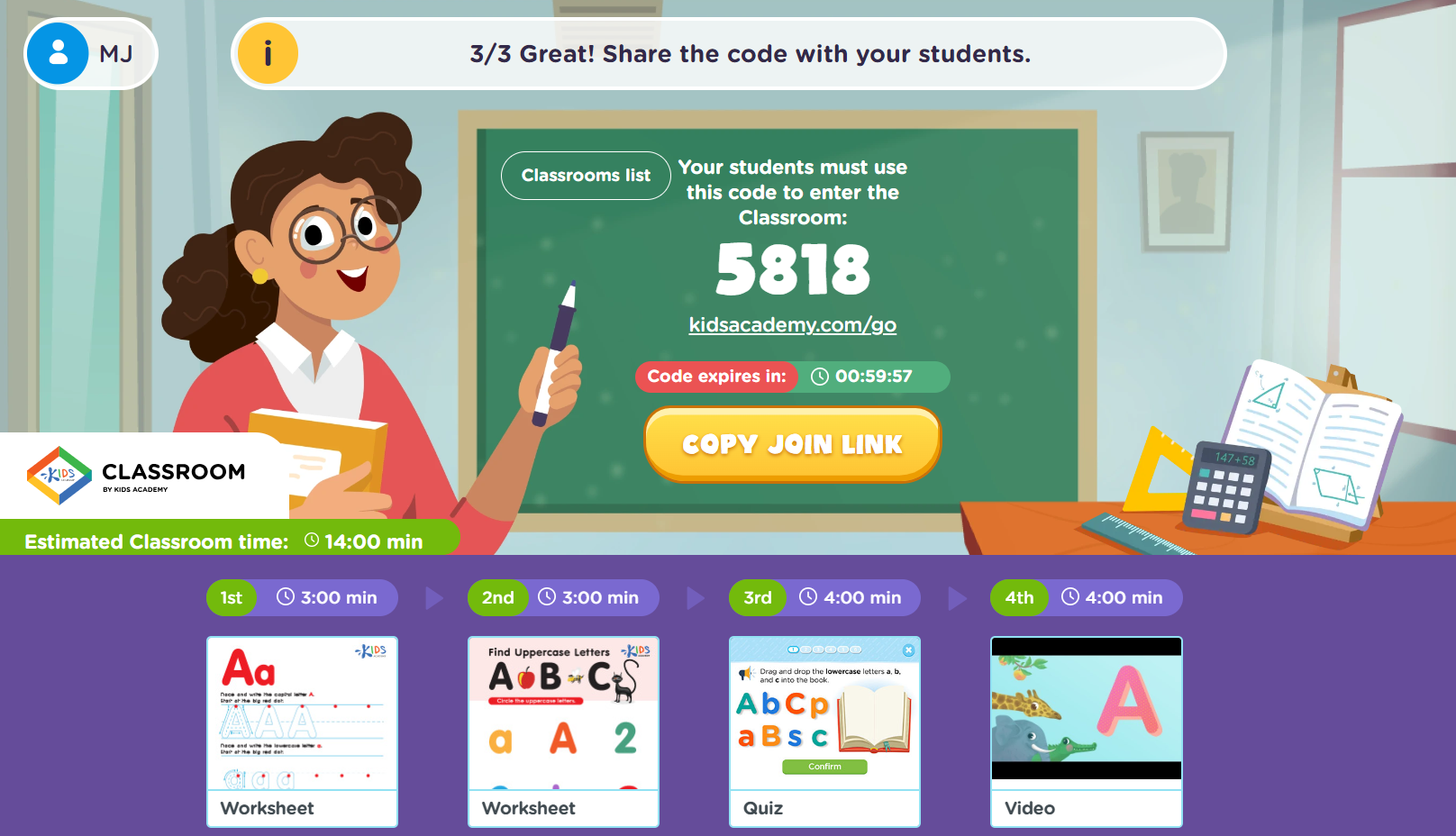Understanding chess pieces Worksheets for Kids
2 filtered results
-
From - To


Chess Pieces Math Worksheet


Rooks Bingo Worksheet
Question/Answer
What are some effective activities to train students’ Understanding chess pieces skill when teaching them about Chess?
Effective activities to train students in understanding chess pieces include setting up puzzle positions that require identifying how different pieces move to solve, practicing with each piece individually on an empty board, playing mini-games focused on one or two types of pieces (e. g.
How to test a Grade 1 student’s Understanding chess pieces skills?
To test a Grade 1 student's understanding of chess pieces, use simple, interactive methods like asking them to identify each piece by name, demonstrate how each piece moves on a chessboard, and explain the unique abilities of pieces such as the knight's L-shape move or the pawn's initial two-square option. Use visual aids and hands-on practice for clarity.
Why is the Understanding chess pieces skill important for Grade 1 students?
Understanding chess pieces and their movements at a Grade 1 level fosters critical thinking, problem-solving skills, and improves concentration. It also teaches planning, foresight, and the consequences of actions, essential cognitive skills beneficial for academic performance and everyday decision-making. Additionally, chess encourages patience and discipline, valuable traits for young learners' overall development.
 Assign to the classroom
Assign to the classroom












